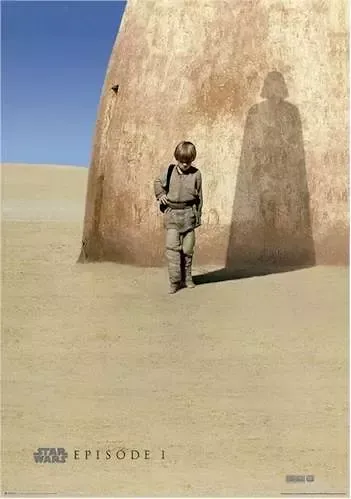An Analysis of Foreshadowing in the Star Wars Saga
In the realm of storytelling, few techniques are as compelling and intricate as foreshadowing. This narrative device involves planting subtle hints or clues early in the story that pay off later, often in dramatic and unexpected ways. Foreshadowing serves to heighten tension, deepen character arcs, and enrich thematic undertones, creating a multi-layered narrative that rewards attentive viewing.
The Star Wars Saga, spanning three trilogies and several standalone films, is a masterclass in the use of foreshadowing. George Lucas and subsequent directors have skillfully woven this technique into the fabric of the Star Wars universe, making it an integral part of the saga's storytelling arsenal. Whether it's a line of dialogue, a visual cue, or a symbolic object, these moments of foreshadowing serve to connect disparate elements of this expansive narrative, adding depth and complexity to both characters and events.

From the Prequel Trilogy's subtle hints at Anakin Skywalker's tragic fate to the Original Trilogy's foreshadowing of Luke and Leia's familial relationship, and extending into the Sequel Trilogy's complex character arcs involving Rey and Kylo Ren, foreshadowing is a constant presence. In this discussion, we will delve into specific instances of foreshadowing across the Star Wars Saga, exploring how they contribute to the narrative and what they reveal about the characters and themes that have made Star Wars a cultural phenomenon.
The Fate of the Younglings
Foreshadowing: In "Attack of the Clones," there is a charming scene where Master Yoda teaches a group of Jedi younglings, using the Force to help them see past their immediate sight. The scene establishes the Jedi Temple as a place of learning, innocence, and sanctuary, showing us the future of the Jedi Order through the eyes of its children.
Realization: This seemingly heartwarming moment is given a horrific payoff in "Revenge of the Sith." During the execution of Order 66, Anakin Skywalker, now Darth Vader, marches into the Temple and slaughters these very same younglings. The earlier scene amplifies the tragedy immensely; we are not just witnessing the death of anonymous children, but the brutal extinguishing of the Jedi's future, turning their safest sanctuary into a tomb.
Anakin and Obi-Wan's Final Farewell
Foreshadowing: The last time Anakin Skywalker and Obi-Wan Kenobi speak as friends in "Revenge of the Sith," their conversation takes place on the balcony of the Jedi Temple overlooking the setting sun. The cinematography deliberately frames Anakin in the encroaching darkness and shadow, while Obi-Wan remains bathed in the last rays of light. This visual cue serves as a powerful hint of their diverging paths.
Realization: This visual metaphor comes to its devastating fruition later in the film. Anakin fully embraces the dark side, while Obi-Wan remains a beacon of the light. Their final, fiery confrontation on Mustafar is the physical embodiment of this divergence. The lighting in their last friendly conversation becomes a poignant and tragic symbol of their irrevocable split and the end of an era for the galaxy.
Leia's Connection to the Force
Foreshadowing: In "The Empire Strikes Back," after his duel with Vader, a defeated Luke clings desperately beneath Cloud City. He reaches out with his mind, and though miles away on the Millennium Falcon, Leia Organa hears his plea, sensing his location and distress. At the time, this appears to be a simple, powerful moment of connection between friends.
Realization: "Return of the Jedi" confirms this was no mere coincidence by revealing that Leia is not only Force-sensitive but is Luke's twin sister. This revelation retroactively reframes her ability to hear Luke as a manifestation of their powerful familial bond through the Force. It also lays the groundwork for her own journey, which culminates in her becoming a Jedi Master herself, as seen in the sequel trilogy.
The Inner Conflict of Kylo Ren
Foreshadowing: Throughout "The Force Awakens," Kylo Ren is shown to be deeply conflicted. Unlike past Sith who are tempted by the light, he is actively tempted by it and struggles to remain on the dark path. He talks to Vader's helmet, asking his grandfather to "show me again the power of the darkness," revealing a deep-seated insecurity in his evil convictions.
Realization: This internal struggle comes full circle in "The Rise of Skywalker." Influenced by a memory of his father, Han Solo, and his connection with Rey, Kylo Ren finally casts off his dark persona and embraces the light, becoming Ben Solo once again. His redemptive act is the culmination of a conflict that was established from his very first appearance, making his final sacrifice all the more meaningful.
The Lasting Impact of Foreshadowing
In summary, the Star Wars Saga's use of foreshadowing is nothing short of masterful. This narrative technique serves as a vital thread that weaves together the intricate tapestry of characters, events, and themes across all three trilogies. Whether it's setting the stage for tragic outcomes, revealing shocking familial connections, or hinting at redemptive arcs, foreshadowing enriches the storytelling and adds layers of emotional depth. It's a testament to the saga's storytelling prowess that these moments not only captivate first-time viewers but also offer new insights upon re-watching, contributing to its enduring appeal as a timeless narrative.

















